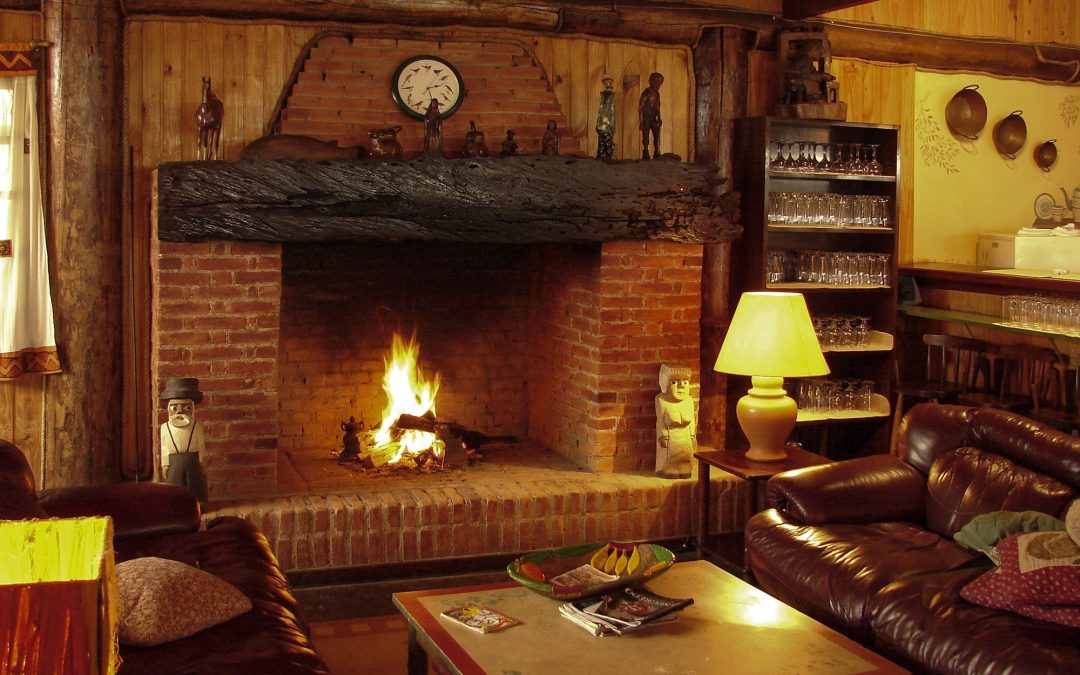Having a fireplace in the home brings warmth during the cold winter months and brings the family together as well. When the crisp chilly air sends everyone inside, friends and family can gather around the fireplace for movie and game nights, or to have a few drinks.
Home fireplaces are beneficial in many ways, but it’s essential you use yours safely. Knowing proper fireplace safety tips is one of the best ways to ensure your home and your family are warm and safe.
For a list of safety tips for fireplaces, continue reading below. Here’s everything you need to know about safely using your home’s fireplace!
Fuel It Correctly
Did you know that there are certain things you can’t burn in your home’s fireplace? Sure, you have a few things around the house that you know would burn, but you have to take great care when choosing what to burn inside your home’s fireplace.
For starters, you don’t want to use gasoline, charcoal starter, or any other type of chemical. Remember, whatever you burn in the fire is going to enter your home’s air. You don’t want to breathe in any chemicals.
You also shouldn’t burn wood that’s been painted or pressure-treated. Plywood, rotten wood, or wet wood also shouldn’t go in the fire. Instead, you’ll want to use dry local firewood.
You can purchase firewood moisture detectors at your local home improvement store to test the levels of the wood. The type of wood you use to burn will have an impact on the heat temperature and how long it’ll burn for. Be sure to do your research and choose the right type of wood for you.
Conduct Routine Chimney Maintenance
Conducting routine chimney maintenance is another essential step for fireplace safety. Over time, your chimney can buildup with ash and other debris. The cleaner you keep it, the better airflow.
Check the chimney cap twice a year to ensure it’s in good condition. This will prevent critters and debris from entering the chimney while still allowing smoke to exit.
If there are tree limbs hanging over the chimney, or something else, you’ll want to have them removed. These are fire hazards. There are signs of a chimney fire that you want to look out for as well.
When creosote builds up inside the chimney, it can reach high temperatures and cause fires. Chimney fires can cause damage to the metal and bricks within the chimney. If you notice this type of damage, have a professional inspect it as soon as possible.
Keep the Damper Open Until the Fire’s Out
The fireplace damper is what’ll prevent hot air from your house from exiting through the chimney. The damper closes off the airflow when not using the fireplace. Before starting your fire, you want to ensure the damper is open completely.
Keep it opened until your fire is 100% out. Having it opened the entire time will help draw the smoke out of your home. You should only close the damper when the flames and embers have diminished.
Some dampers are built into your fireplace and are at the mouth of the flue. There are times when these dampers might have leaks in them. You should inspect your damper regularly to ensure there are no leaks.
If there is an issue, a chimney-top damper is a great alternative.
Never Leave the Fire Unattended
Although you might have the fire under control, you should never leave it unattended. Before you leave your home or go to bed at night, you should ensure the fire is out without any uncertainty.
If you need to leave the room while the fire is burning, be sure to take any small children out of the room. Keep them by your side as long as the fire is burning or still hot after being put out.
There are also fireplace safety products you can use to prevent curious children from being burned. Another good tip is to keep all fireplace tools up high and out of reach of small children.
Have Fire Safety Conversations With Children
Aside from having all of the proper safety measures in place, you should have a conversation with your children about fire safety as well. If you’re going to have a fireplace in your home with children, then your children should know all the rules regarding the fire.
Teach them about the benefits of the fireplace and the potential dangers. Allow them to watch you start the fire and put it out. They’ll eventually pick up on your mannerisms and how you handle fireplace safety.
Have It Professionally Inspected Annually
Although there are several things you can do to keep your fireplace well-maintained and safe, none of those things will make up for the need to have it professionally inspected each year. Contact a professional to come out and have the fireplace inspected.
A professional will notice signs of an issue or fire hazard that you may have missed. You should also have your smoke and carbon monoxide detectors tested as well. Both of these should be in working order at all times.
If you keep up with your regular inspections, you can have some peace of mind.
Don’t Forget These Fireplace Safety Tips
These fireplace safety tips are important to know at all times. If needed, print out a copy of this guide and keep it near the fireplace to refer back to. Following all of these fireplace safety tips is the best way to keep your home and family safe and warm!
Do you need your entire home inspected before selling or buying or to find issues you may not have noticed yourself?
Schedule an appointment today!

